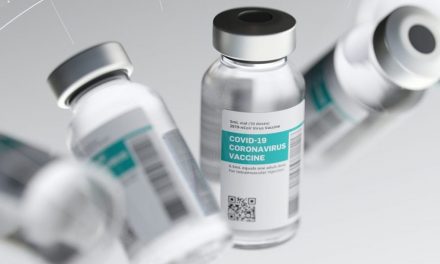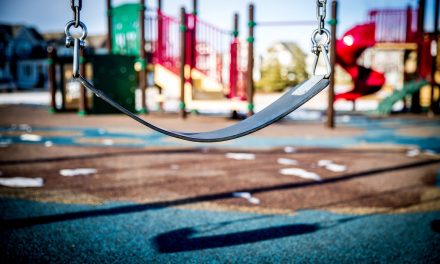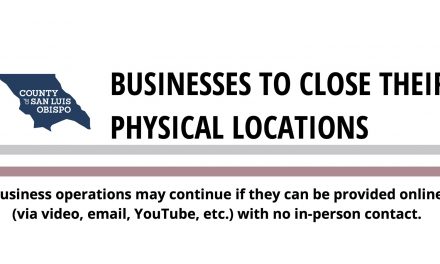The County of San Luis Obispo Public Health Department updates residents about coronavirus, also known as COVID-19
The County of San Luis Obispo Public Health Department is updating residents about coronavirus, also known as COVID-19. The most current information along with the preparedness and response systems we have in place indicate that the impact of the virus to our community will not be nearly as severe as that experienced by China and other less-prepared regions.
Health Officer Dr. Penny Borenstein wants the public to know that, “While there are a lot of things we don’t know right now, I want to keep everyone informed about what we do know and what we’re doing to protect the health of our community.”
What We Know Right Now
- The health risk from COVID-19 in our county remains low at this time. There are currently no cases of COVID-19 in San Luis Obispo County; however, our county will likely see cases in the near future.
- There have been 53 cases in California with one recent death in an elderly adult– believed to have contracted the disease on a cruise ship.
- Governor Newsom declared a State of Emergency to help the state prepare for broader spread of COVID-19. This proclamation includes increased protections against price gouging, offers more assistance to local governments and allows health care workers to come from out of state.
- Most recent data indicate a lower fatality rate than initially thought, and the rate continues to go down in areas with reliable and robust reporting. Though seemingly worse than a typical influenza season, COVID-19 is not nearly as deadly as other illnesses that our country has successfully dealt with like SARS or Ebola, and it is not nearly as contagious as measles, nor even seasonal flu.
What We’re Doing Right Now
- We continue to enhance our preparedness. The Public Health Department is leading a COVID-19 response team, which has been meeting since late January to identify and prioritize actions. SLO Public Health is experienced in pandemic response and has existing emergency preparedness and response plans to ensure a well-coordinated and effective response.
- We are working toward having COVID-19 testing capabilities in our Public Health Laboratory very soon for a limited number of ill persons.
- We are working with others. SLO Public Health is actively working with the Centers for Disease Control and Prevention (CDC), the California Department of Public Health (CDPH), local hospitals, health care providers, first responders, Cal Poly, Cuesta College, schools, long-term-care facilities and other partners to protect our community’s health.
- We have open lines of communication. Not only are we staying informed of the situation by participating in regular briefings with state and federal health officials, but we are also communicating frequently with our community partners and the public.
What the Public Can Do Right Now
- Stay informed and get your information from credible sources. Visit www.ReadySLO.org for the latest news from County Public Health, coronavirus FAQs, and up-to-date information from the CDC.
- Try to stay calm. While this new disease is of concern to everyone and especially older persons and those who suffer from certain chronic diseases, there is no need for emergency action at this time. For example, we are not recommending the use of masks; there is no need to stockpile household goods beyond the usual recommendation of a three-day supply for any type of emergency; and we are not recommending cancellation of school or any events.
- Do not go to the emergency room unless you are sick enough to need immediate health care. Local hospitals cannot test for the COVID virus at this time. Hospitals are experiencing high volumes of patients currently due to ongoing flu illness in addition to persons concerned about COVID-19. This patient surge impedes our hospitals ability to provide urgent care for persons affected by trauma, heart attacks, strokes and other emergency conditions.
- Stay healthy. Take everyday precautions to help prevent the spread of respiratory viruses, like the flu and novel coronavirus:
- Get your flu shot to protect against flu, which can produce symptoms similar to novel coronavirus.
- Wash your hands often with soap and water for at least 20 seconds. If soap and water are not available, use an alcohol-based hand sanitizer.
- Avoid touching your eyes, nose, and mouth with unwashed hands.
- Cover your cough or sneeze with a tissue or in your elbow.
- Clean and disinfect frequently touched objects and surfaces.
- Avoid close contact with people who are sick.
- Stay home when you are sick and avoid contact with others.
- If you’re sick with a contagious illness, call your health care provider or clinic before you arrive. They will provide you with special arrival instructions to avoid infecting others.
- Don’t go to the emergency room unless you have a medical emergency.
- Think twice about travel to other countries where community spread is present. See CDC travel advisories.
County Public Health says the public plays an important role in how we get through this. Dr. Borenstein adds, “While concern, precaution, and preparedness are good for us, panic is not. We need to all work together to keep our community safe and healthy.”














